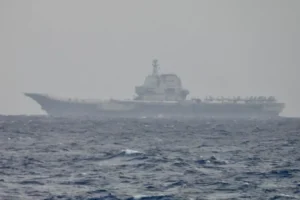The world has seen a rapid increase in the pace of technology development in recent years. Advances in sensors, autonomy, data networks, and artificial intelligence and machine learning (AI/ML) have led to many new products and services including vehicles and machines that don’t need a human aboard or even to operate it at all. These machines, commonly called “unmanned systems” and their ability to operate around the maritime domain represent both opportunities and new risks for the Coast Guard. We could use these tools to expand and improve our service to the public. Industry wants to design these systems into commercial vessels for greater business and profits. Meanwhile, kids and adults today are already using small quadcopters for their own entertainment or businesses. Still others may use them for criminal or malicious purposes. What should the Coast Guard do to remain “Always Ready”?
Vice Adm. Peter Gautier, Deputy Commandant for Operations, signed the Coast Guard’s Unmanned Systems Strategic Plan March 31. The plan charts a course that will guide the organization to adapt to the emergence of this technology in three different ways. First, the Coast Guard will find ways to use unmanned systems to improve our mission execution. Second, the Coast Guard will prepare to defend against threats from unlawful use of unmanned systems. Finally, the Coast Guard must establish and enforce a regulatory framework for the safe and lawful use of unmanned systems and automation in the Marine Transportation System.
One of the best functions of unmanned systems in the air, on the water, underwater, or in space is to easily carry advanced sensors that will provide more data and information for operational commanders. This can yield broader maritime domain awareness to more effectively and efficiently execute Coast Guard missions. Obtaining and using unmanned systems alone are not enough, though. These systems will rely on other key technologies that must be pursued in concert with unmanned systems for them to be fully leveraged as a powerful force multiplier. The amount of data collected can be vast and must be delivered at the right time and in an understandable format to operational decision makers. The intelligent handling of operational data will require resilient tactical communications networks, advanced data management, AI/ML driven analytics, and next generation command and control interfaces to deliver a new operational data ecosystem that will be the backbone of these efforts.
With this challenge to adapt to the emergence of unmanned systems, the UxS Strategic Plan lays down a trackline to take our service from an organization that has grown adept at reacting to any challenges that may arise, to one that can be proactively postured to better respond when and where we are needed most. With this shift, we will be a Coast Guard that remains truly Always Ready.
Source: MyCG









